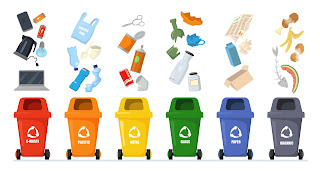Unleashing Creativity and Sustainability Through Upcycling Clothes
In a world where sustainability is becoming increasingly paramount, upcycling has emerged as a creative and environmentally friendly solution. Upcycling clothes, in particular, has gained significant traction as individuals seek ways to reduce waste and make more conscious fashion choices. In this blog post, we'll delve into the concept of upcycling clothes, exploring its benefits, and providing some inspiring ideas to get you started on your own upcycling journey.
Understanding Upcycling:
Waste Reduction:
Promotion of Sustainability:
Embroidery and Embellishments:
Refashioning and Reconstruction:
Denim Revival:
Accessory Upcycling:
At its core, upcycling is about breathing new life into old or discarded items. It's the process of transforming something deemed as "trash" into a treasure of higher value or quality. When it comes to clothes, upcycling involves repurposing garments in innovative ways, whether it's through altering their design, combining different pieces, or embellishing them with unique touches. The beauty of upcycling lies in its ability to unleash creativity while simultaneously promoting sustainability.
Benefits of Upcycling Clothes:
Benefits of Upcycling Clothes:
Environmental Impact:
By upcycling clothes, we reduce the demand for new raw materials, thereby lessening the strain on the environment caused by traditional manufacturing processes. This helps to conserve resources, decrease energy consumption, and minimize the carbon footprint associated with clothing production.
Waste Reduction:
Textile waste is a significant issue globally, with millions of tons of clothing ending up in landfills each year. Upcycling offers a solution by diverting these garments from disposal sites and giving them a new purpose, thus extending their lifespan and reducing overall waste.
Promotion of Sustainability:
Embracing upcycling as a part of our lifestyle promotes sustainable consumption habits. It encourages us to value and make the most of the resources already available to us, rather than constantly seeking out new purchases. In doing so, we contribute to a more circular economy and foster a mindset of conscious consumption.
Inspiring Upcycling Ideas:
Inspiring Upcycling Ideas:
Patchwork Creations: Combine different fabric scraps to create unique patchwork designs on jackets, jeans, or even accessories like bags and hats. Patchwork not only adds visual interest but also utilizes small pieces of fabric that might otherwise go to waste.
Embroidery and Embellishments:
Give plain garments a new lease on life by adding intricate embroidery, beads, sequins, or patches. These embellishments not only enhance the aesthetic appeal of the clothing but also allow for personalization and self-expression.
Refashioning and Reconstruction:
Transform outdated or ill-fitting clothing into stylish new pieces by altering their silhouette, hemline, or neckline. Turn a long skirt into a trendy mini skirt, or repurpose a button-down shirt into a chic off-the-shoulder top.
Denim Revival:
Old jeans can be repurposed in countless ways, from creating denim shorts and skirts to fashioning denim bags or even quilts. Get creative with distressing, bleaching, or dyeing techniques to give your denim creations a fresh look.
Accessory Upcycling:
Don't limit yourself to clothing—accessories like scarves, belts, and jewelry can also be upcycled. Turn an old scarf into a headband or transform broken jewelry pieces into unique statement pieces.
Conclusion:
Conclusion:
Upcycling clothes is not only a means of expressing creativity but also a powerful way to promote sustainability and reduce our environmental impact. By embracing the principles of upcycling, we can breathe new life into old garments, minimize waste, and contribute to a more circular and conscientious fashion industry. So, why not embark on your own upcycling journey today? Unleash your creativity, reduce your carbon footprint, and join the movement towards a more sustainable future—one upcycled garment at a time.



Comments
Post a Comment